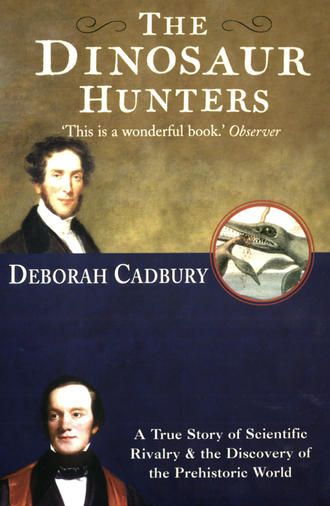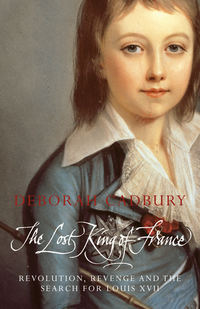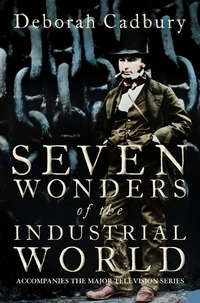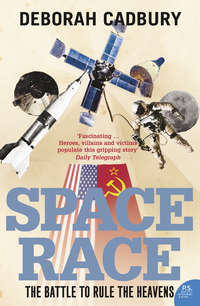
Полная версия
The Dinosaur Hunters: A True Story of Scientific Rivalry and the Discovery of the Prehistoric World
When she showed her husband, he saw at once that this was something important. ‘Soon after my first discovery of colossal bones,’ he wrote, ‘some teeth of a very remarkable character particularly excited my curiosity for they were wholly unlike any that had previously come under my observation.’ The fragment of tooth was more than an inch long, and shaped into a blunt, grinding surface at the crown. The couple were able to trace the source of the pile of stones to the same quarry in Whiteman’s Green in which Mantell had found the other giant bones. ‘Even the quarrymen, accustomed to collect the remains of fishes, shells and other objects embedded in the rocks,’ he wrote, ‘had not observed fossils of this kind and were not aware of the presence of such teeth in the stone they were constantly breaking for the roads.’
The ‘tooth’ cast all his observations into doubt. He could see that this was not the tooth of a crocodile, for it did not have the sharp, pointed crown essential for a carnivore. It had a broad, flattened grinding surface, supported by thick enamel on one side and with a marked ridge up the middle. This was much more like the tooth of a herbivorous mammal, that had been worn down by constant chewing. ‘The first specimen so entirely resembled the part of the incisor of a large mammal,’ he wrote, ‘that I was much embarrassed to account for its presence in such ancient strata, in which according to all geological experience, no fossil remains of mammal would ever be discovered.’
Although the tooth resembled a herbivorous mammal like a hippopotamus or rhinoceros, such creatures were not supposed to exist in ancient rock. Cuvier’s extinct large mammals such as the mammoth and mastodon had been retrieved from Tertiary deposits. Mantell thought from his correspondence with Etheldred Benett that Weald rocks were much older, from the Secondary period. To suggest that mammals had lived in ancient times was one step beyond anything that naturalists could envisage. As James Parkinson had written, although the time-scale of Creation as outlined in Moses had been questioned, the order of Creation was not in doubt. Parkinson thought it striking that the order of creation as stated in the Scriptures was ‘in close agreement’ with geological evidence: ‘The Creative Power has been exercised with increasing excellence in its objects … the last and highest work appearing to be Man.’ No one had yet challenged the assumption that mammals were created last, when God had prepared the Earth for the higher animals.
This belief informed Mantell’s quest; he did not yet have enough evidence to disregard the huge burden of accepted wisdom. He asked himself, if the owner of the tooth was not a large mammal, then what was it? The tooth did not resemble that of any fish at the Hunterian Museum. It could not come from a turtle; they have no teeth, only horny beaks. No amphibian was known to reach giant proportions. And it certainly was not from a bird – no toothed birds had been reported at this time. By a process of elimination the evidence pointed to a bizarre conclusion: the teeth belonged to a giant herbivorous lizard.
Yet this conclusion made no sense. ‘As no known, existing reptiles are capable of masticating their food I could not venture to assign the tooth in question to a lizard,’ wrote Mantell. A herbivorous reptile that could chew its food like a cow was unheard of. It was a preposterous idea. The experts in London, such as William Clift, were following Georges Cuvier, interpreting the fossil record by analogy to living forms. But there was no modern analogue to such a strange reptile.
Gideon Mantell lacked the one piece of evidence that would have proved the tooth belonged to a reptile: a fossilised jaw. A mammal’s jaw is very distinctive. Even if the teeth are missing, there are differently shaped spaces for the various types of teeth: molars, premolars, incisors and canines. A reptile does not have several types of teeth; although its teeth may vary in size, the sockets are all the same shape. But Mantell could not find a jaw, just a single disembodied tooth.
When he studied the tooth at home, in his drawing-room, surrounded by his collection, in moments of doubt – the large fragment of tooth was so worn – he sometimes wondered if he had found anything at all. Viewed from some directions it was almost unrecognisable as a tooth. Fine, feathery black lines were woven across the surface like a spider’s web. There it lay in his hand, a scrap of a fossil scarcely larger than a pebble, withholding the secret to an unknown past.
During the summer of 1821 Mantell redoubled his efforts to gather any evidence that could shed more light on the mystery. Scarcely interrupted by the major events of the day – the death of Emperor Napoleon on St Helena, the spectacular coronation of the ageing King George IV, the summer races and Brighton fair – he struggled with his geological research whenever time could be spared from his practice. Sometimes he took the single-horse chaise to Cuckfield with his young apprentice, George Rollo; occasionally he rode out alone to hunt for further evidence of his monster.
By the autumn, Mantell’s first-floor rooms were filled with a strange assortment of fragments of giant bones uncovered in the Weald. From his knowledge of anatomy while training as a doctor he was able to identify several of them. He wrote to the Reverend Conybeare at the Geological Society, telling him that he had ‘ribs; clavicle [part of the shoulder]; radius [forearm]; pubis [front part of the pelvis]; ilium [from the side of the pelvis]; femur or thigh bone; tibia or shin bone of the leg; metatarsal bones of the foot; vertebrae forming the back-bone and teeth’. Although the teeth appeared broken off close to the jaw, the jaw itself could not be traced. Some of the bones had features in common and seemed to belong together. Others were so broken and fragile they were impossible to identify. All the bones were hopelessly intermingled with debris from other animals, turtles, fishes, shells and vegetables.
The only way he could begin to make sense of the puzzle was to distinguish the different types of teeth. There seemed to be two sets here that could not have come from the same species of animal. One set of teeth were blade-like and up to three inches long, flattened from side to side, with two sharp edges stretching from the crown. These edges were serrated like a steak knife, constructed for tearing flesh, not eating vegetables. The teeth could only have belonged to a carnivorous animal. And although he couldn’t prove it beyond doubt, Mantell was certain that they belonged to a giant reptile because they were more similar to crocodile teeth than anything he had seen at the Royal College of Surgeons. However, there were some crucial differences. Crocodile teeth are conical, slightly curved, the surface of the enamel covered with ridges radiating longitudinally from the tip to the crown. A crocodile grips its prey, and then flicks its tail in the water to spin, so it can more easily rip and tear off chunks. These unfamiliar, blade-like, carnivorous teeth would have allowed their unknown owner a slicing action, like carving meat.
Even more puzzling was the second set of teeth in his collection, the herbivorous teeth found by his wife. These ‘possessed characters so remarkable that the most superficial observer would have been struck with their appearance as something novel and interesting,’ he wrote. ‘When perfect they must have been of a very considerable size.’ Self-taught, without the backing of a university or membership of a prestigious society, Mantell could hardly claim that these once belonged to a giant herbivorous lizard when such an improbable creature was not supposed to have existed. He might just as well suggest he had found a centaur, a unicorn or a dragon, or some other preposterous creature of ancient myth.
But the most remarkable feature of all was the sheer size of the beasts. Some of the fragments of vertebrae were up to five inches long; there was a part of a rib that measured twenty-one inches long, even the metatarsal bones in the foot were huge and chunky. As he was chiselling away one night, he realised that one particular broken section of thigh bone emerging from the stone indicated an animal far larger than any he knew – this piece was nearly 30 inches long and 25 inches in circumference. There it lay in front of him, defying all logic and reason. There was no way of proving to which set of teeth it belonged. Compared to a mammal bone, if scaled up in size his discovery would make a preposterous animal, far larger even than a house.
I may be accused of indulging in the marvellous, if I venture to state that upon comparing the larger bones of the Sussex lizard with those of the elephant, there seems reason to suppose that the former must have more than equalled the latter in bulk and have exceeded thirty feet in length! And yet some bones in my possession warrant such a conclusion … this species exceeded in magnitude every animal of the lizard tribe hitherto discovered, either in a recent or a fossilised state.
Could a heart really pump blood around a creature 30–40 feet long? Would muscles be strong enough to support such a heavy frame? What would it have eaten to keep its several tons of reptile flesh in pristine vigour? The creature beginning to emerge from his solitary work each night was hardly believable, a phantom from the underworld, yet there it was, solid as a rock, unassailable. As a glimpse of an ancient form of life it was tantalising; a seemingly endless, uncompletable, jigsaw. None of it added up to a whole animal, or even a coherent view of part of an animal. But with single-minded, purposeful dedication, Mantell continued to devote all his spare time to trying to solve the mystery. Everything in his life was sacrificed to this one bewitching interest. He would place the bones in history. He would be the man acclaimed.
But unknown to Gideon Mantell, he was not the only person in England in the early 1820s who had uncovered evidence that giant lizards once roamed the land.
3 Toast of Mice and Crocodiles for Tea
Here we see the wrecks of beasts and fishes
With broken saucers, cups and dishes …
Skins wanting bones, bones wanting skins
And various blocks to break your shins.
No place in this for cutting capers,
Midst jumbled stones and books and papers,
Stuffed birds, portfolios, packing cases
And founders fallen upon their faces …
The sage amidst the chaos stands,
Contemplative with laden hands,
This, grasping tight his bread and butter
And that a flint, whilst he doth utter
Strange sentences that seem to say
‘I see it all as clear as day.’
‘A Picture of the Comforts of Professor
Buckland’s rooms in Christ Church,
Oxford’ by Philip Duncan, 1821, cited in
The Life and Correspondence of WilliamBuckland by Anna Gordon, 1894
In the heart of Oxford, under the watchful eye of the deans and canons at the university, the Reverend William Buckland’s enthusiasm for ‘undergroundology’ was beginning to attract wider support. As Reader in Mineralogy he had expanded the course to debate the latest geological ideas: whether the ‘days’ of Creation could correspond to lengthy ‘eras’; the nature of Noah’s Flood; the order of Creation. According to one reviewer, Buckland was so inspiring as a speaker that ‘he awakened in the University and elsewhere, an admiration and interest in Geology’. He told his friend the amateur geologist Lady Mary Cole that he had been lecturing to an ‘overflowing class … amongst whom I reckon the Bishop of Oxford, four other Heads of Colleges and three Canons of Christchurch’.
His idiosyncrasies were becoming almost as famous as his lectures and were accepted at the university as part of his brilliance. Anyone passing through the neatly trimmed rose gardens of the quad at Corpus Christi to Buckland’s rooms, expecting to find the usual happy amalgamation of elegance and learning fitting for a don, would soon discover that the professor had different priorities. ‘I can never forget the scene that awaited me on repairing from the Star Inn to Buckland’s domicile,’ recalled Roderick Murchison, an undergraduate at Oxford. ‘Having climbed up a narrow staircase … I entered a long corridor-like room filled with rocks, shells and bones in dire confusion. In a sort of sanctum at the end was my friend in his black gown, looking like a necromancer, sitting on a rickety chair covered with some fossils, clearing out a fossil bone from the matrix.’
In addition to fossils strewn liberally on almost every surface and the stuffed creatures in the hall, Professor Buckland was a keen naturalist and kept a number of unusual pets. There were cages full of snakes and green frogs in the dining-room, where the candles were placed in Ichthyosauri’s vertebrae. Guinea-pigs roamed freely throughout his office. Walter Stanhope, a tutor at Oxford, described an evening in Buckland’s apartments: ‘I took care to tuck up my legs on the sofa, for fear of a casual bite from a jackal that was wandering around the room. After a while I heard the animal munching up something under the sofa and was relieved that he should have found something to occupy him. I told Buckland. “My poor guinea pigs!” he exclaimed, and sure enough, four of the five of them had perished.’
By far the most splendid creature in Buckland’s menagerie was a bear, rather grandly named Tiglath Pileser, after the founder of the Assyrian Empire in the Old Testament Book of Kings. Unlike his namesake, who was renowned for his brutal punishment of his opponents, Tiglath the bear was ‘tame and caressing’. Buckland even went so far as to provide the bear with a student costume in which he participated fully in university life, especially the wine parties. ‘We had an immense party at the Botanic Gardens,’ Charles Lyell, one of Buckland’s undergraduates, recalled. ‘Young Buckland had a bear, “Tig” dressed up as a student complete with cap and gown.’ Tiglath Pileser was formally introduced to senior figures at the university. ‘It was diverting to see two or three of the dons not knowing what to do for fear their dignity was compromised.’
Most perplexing of all for visitors to Buckland’s apartments was the menu, since Buckland, a born experimentalist, had decided to eat his way through the animal kingdom as well as study it. ‘I recollect various queer dishes which he had at his table,’ recalled his friend John Playfair. ‘The hedgehog was a good experiment and both Liebig and I thought it good and tender. On another occasion I recollect a dish of crocodile, which was an utter failure … though the philosophers took one mouthful, they could not be persuaded to swallow it and rejected the morsel with strong language.’ John Ruskin, recalling his undergraduate days at Buckland’s table, wrote: ‘I met the leading scientific men of the day, from Herschel downwards … Everyone was at ease and amused at that breakfast table, the menu and the science of it, usually in themselves interesting. I have always regretted a day of unlucky engagement on which I missed a delicate toast of mice.’
The discussions that graced these gastronomic occasions were undoubtedly no less exotic. Buckland believed that geological history reflected a gradual preparation of the earth for Man’s habitation and was optimistic that a scientific history of the earth would tally with scriptural records. He was impressive in debate and was soon influencing some of the more liberal churchmen of his day. John Bird Sumner, the Bishop of Chester and later Archbishop of Canterbury, wrote a Treatise on the Records of Creation in 1816, in which he supported Buckland and other members of the Geological Society in viewing the six ‘days’ as six creative ‘eras’.
Buckland’s keenness to reconcile the new science with religion won him support in high places. As his reputation grew, he made the acquaintance of leading gentlemen of the day, including Lord Grenville, the Chancellor of Oxford University; Sir Joseph Banks, the famous botanist; and Sir Everard Home at the Royal Society, as well as leading politicians such as Robert Peel. Using these powerful contacts, Buckland lobbied for the first chair of geology to be created at Oxford. He reassured Lord Grenville that the sciences would, of course, be subordinate to the classics. ‘I would not surrender a single particle of our system of classical study,’ he promised. The matter was referred to the highest level of government, eventually reaching His Royal Highness, the Prince Regent.
In 1818, with the approval of His Royal Highness, the stipend for a Professor of Geology at Oxford was allotted from the Treasury. ‘I feel quite proud of the high consideration which is given to the noble subterranean science by such exalted personages,’ Buckland told Lady Mary Cole at Penrice Castle. However, such approval from leading members of society added to the pressure on Buckland to satisfy the urgent need to find geological evidence that would corroborate the Scriptures, such as a biblical Flood. The religious tradition was so entrenched at Oxford that if geologists could not discover such evidence quickly, the infant science would lack credibility.
When Buckland became Reader in Geology he also became Director of the Ashmolean Museum. Directly under his supervision in this museum, on display in the heart of Oxford for well over a century, were the bones of an unknown giant animal. As early as 1677 the first Keeper of the Ashmolean Museum, a Dr Robert Plot, had described them. While writing a Natural History of Oxfordshire, Dr Plot had come across an inexplicably large portion of thigh bone from a local quarry, weighing more than twenty pounds. He had suspected it was the bone of an elephant brought to England during the Roman invasion of Britain. When later he had an opportunity to study the skeleton of an elephant, he was puzzled to find that the huge Oxford fossil was totally different. There seemed only one conclusion to be drawn. He wrote, the fossil ‘has exactly the figure of the lower most part of the Thigh-bone of a Man’.
During the eighteenth century, more giant bones had been discovered in quarries around Oxford. Joshua Platt, a ‘Curiosity-Monger’, found three large vertebrae buried at Stonesfield, near Woodstock. Later, the same dealer reported part of a giant thigh bone almost thirty inches long which he valued at four shillings, and a fragment of scapula, or shoulder bone. Early in the next century Professor Kidd, Buckland’s predecessor as Reader of Mineralogy, had studied the bones and concluded they were derived from some strange mammal. William Buckland did not record any conclusions about the unknown creature in 1818 when he became the Keeper of the museum, although it is likely that people looked to him for an opinion. Impossible to classify and the subject of the wildest speculation, the bones were at once familiar and accepted as everyday objects and at the same time represented a past of incomprehensible strangeness.
However, later that year there was an opportunity for Buckland to extend his unique brand of English hospitality to a very distinguished French visitor: Georges Cuvier. Cuvier was updating his extensive survey of fossils, Recherches sur les Ossemens Fossiles, and hoped to see the latest discoveries of giant bones in Oxford. By now, he had almost legendary status throughout Europe. Approaching his fifties, his thick red hair long since dulled, the ‘Napoleon of Intelligence’ made a powerful impression and the self-confidence amassed from a lifetime of invariably being ‘right’ was palpable. It was said of Cuvier that his library – containing some nineteen thousand volumes – was so familiar to him that he could remember everything and retrieve any volume or monograph he required in seconds. He had been showered with awards, named Councillor of State in 1813, and was later granted the honorary title of Baron.
Cuvier visited the Ashmolean and was presented with a variety of giant bones: teeth, vertebrae, ribs, part of an enormous thigh bone and confusing fragments of other bones. No two bones, except for some of the vertebrae, had been found connected together. It was impossible to tell from the detached bones whether they originated from different animals of various ages and sizes or belonged to the same creature. Although there are no records of the conversation that took place between Cuvier and Buckland in 1818, subsequent letters between the two reveal that in no time Cuvier had solved the puzzle.
The first clue available to him came from the rocks themselves. The bones from Stonesfield were found in rock at a considerable depth below the surface. The stone was being mined to provide roofs for new buildings, and could only be obtained by going deep underground. ‘They descend by vertical shafts through a solid rock … more than 40 feet thick, to the slaty stratum containing these remains,’ wrote William Buckland. The giant bones ‘are not lodged in fissures and cavities but are absolutely imbedded in a deeply situated stratum … which extends across England from near Stamford in Lincolnshire to Hinton near Bath’.
Buckland had studied these rocks and confirmed the earlier work of the surveyor William Smith that the Stonesfield slate lay immediately above a stratum known in the geological sequence as ‘the oolitic limestone’ of Bath. The oolitic limestone was correctly seen as ancient, formed at the same time as the ‘Jura [Jurassic] limestone’ strata found on the Continent, well below the chalk in the Secondary series. No mammals had been found this far back in the geological sequence; Cuvier’s large mammals were found in the more recent, Tertiary formations. So although the thigh bone had mammalian characteristics, with a thickset, straight vertical shaft, Cuvier examined the bones confident that they were far more likely to be from a reptile than a mammal.
Unlike Gideon Mantell’s discoveries in Sussex, the huge teeth displayed at the Ashmolean were still attached to the jaw, and this too provided several important clues. Although the holes for the teeth varied in size along the length of the jaw, they were all the same shape, typical of a reptile. Tiny pointed teeth were poking through the jaw beside the adult teeth which, since reptiles have replacement teeth growing through the jaw all their lives, also indicated that the jaw belonged to a reptile. ‘The exuberant provision in this creature,’ Buckland wrote, ‘for a rapid succession of young teeth to supply the place of those which might be shed or broken is very remarkable.’ Convinced the bones belonged to a reptile, both from the age of the rocks and the characteristics of the jaw, Cuvier could pronounce with some certainty that it had other reptilian characteristics: it had been oviparous, or egg-laying and had a dry, scaly skin.
But it was much harder to define what kind of reptile or lizard it might have been. Cuvier could see that, within the reptile class, it was not like a turtle, because there was no shell and it lacked the distinctive shape of skull and form of vertebrae. The largest reptile known at this time was a crocodile. These bones shared some features in common with crocodiles: the double-headed ribs, the vertebrae with flat articulating surfaces; and the giant thigh bone had a fourth trochanter, an extra surface for muscle attachment. Mammals have only three surfaces for muscle attachment at the top of the thigh bone; crocodiles, like the unknown creature, have four, denoting a tremendous muscle structure. However, there the similarity ended.
Unlike the conical ridged teeth of the crocodile, these teeth were compressed, with a long serrated edge along the whole extent of the enamel, like a steak knife. The exterior surface of the jaw had distinct cavities for the passage of blood vessels and nerves, allowing the creature a very good blood supply to support the activity of the jaw. And whereas a crocodile jaw is long, thin and pointed, this fragment of lower jaw was short, high and narrow, flattened from side to side. From the absence of curvature on any piece of the lower jawbone, nearly a foot in length, it seemed likely that this creature’s jaw terminated in a flat, straight, and very narrow snout. Cuvier concluded that of all living animals, these bones were most similar to a carnivorous lizard known as the monitor lizard. However, there was one crucial difference: size. Comparing the thigh bone, which was ten inches in circumference, to the equivalent bone in a lizard, he simply scaled up. ‘From these dimensions,’ wrote Buckland, ‘a length exceeding 40 feet and a bulk equal to that of an elephant seven feet high, have been assigned by Cuvier to the individual to which this bone belonged … we may with certainty ascribe to it a magnitude very far exceeding that of any living lizard.’








